When you get your mask, you’ll want to know a few things about it!
- Try the mask on by removing the velcro cover and placing it over your nose and mouth, with the noseclip up.
- The nosepiece can be adjusted for the right shape of your nose.
- The mask should be placed as high as possible on your nose.
- The strap should be secured at a setting that is not too tight but not too loose on your face.
- To perform a seal test, breathe in and out through your mouth while you check under your chin and on either side of your nose for escaping air. Adjust if you feel air when breathing out, or see your glasses fogging up.
- Try looking left, right, up and down to make sure your mask is comfortable.
- Reduce pressure on the bridge of your nose. Pinch the nosepiece quite tight before putting the mask on. Then when the mask is on, breathe through your nose while you pull the parts of the mask on your cheekbones in opposite directions outwards.
- Try the mask while you breathe out. There should be no restriction. It should fit with your helmet. Adjust the mask until you’re comfortable.
- To change the filter, unscrew the valves, wash the 2 silicone stoppers and 4 valve parts, handwash the mask shell with some soap, and lastly, they can be dried.
After Purchase
No, you don’t need to replace the exhalation valves fitted on your mask. Unless the valve breaks, or the silicone stopper inside the valve is lost, you do not need to replace them. You can however clean them to stop dust from building up and stopping the 100% seal. We do have replacement valves available for sale in case you lose them.
To replace the filter, simply twist the inside of each exhalation valve counter clockwise, while holding onto the valve on the outside of the mask. Remove the valves, replace the filter, and screw the valve back on.
Be careful not to misplace the silicone stopper in the valves. Also remember to screw the valves on tightly, as it easy for small parts to get lost.
Here we change the filter in our masks:
Step 1: While holding the outside of each valve, unscrew both valves counter clockwise until each of the two pieces separate.
Step 2: Unclip or remove the silicone stopper, and rinse it. Be careful not to lose it.
Step 3: Remove the filter
Step 4: Wash the outer layer of the mask by hand with any form of soap for a maximum of 5 minutes
Step 5: Hang it up to dry
Step 6: Insert your new filter, with the flat edge under the nosepiece, and fit the smaller part of the valve on the inside. Then attach the second piece on the front side of the mask, find the right spot, and twist the inner part of the valve clockwise.
Tips: Tighten the valves enough so that they won’t come loose on their own. Tightening them too much could break them.
It is quite normal to be uncomfortable at first when using our masks. Resistance is increased when breathing through our microfiber active carbon filters. Just like all things, a pollution mask takes time to get used to.
Our masks are very adjustable, so finding the right fit for you shouldn’t be too difficult. First and foremost you should make sure that the nose piece is positioned high up on the bone of your nose so that it is not closing your nose shut. You can do this by lifting it up on your cheek bones. Before you put on the mask it helps to tighten the nosepiece as much as you think would fit the size of your nose. Then you can close your mouth and breathe through your nose while you pull the fabric on your cheekbones left and right until you can fully breathe through your nose.
You should try to have the mask tight, but not too tight. It is alright if the mask is a little bit loose so when you turn your head it doesn’t pinch your nose. When you breathe in, the filter forms a seal so don’t worry if it feels a little bit loose. Just perform the seal check to see if all the air you breathe out is coming out of the valves, and that there is no air escaping into your eyes or under your chin. If there is no seal, you can tighten the mask or adjust the nosepiece.
As the filter removes more particles from the air you breathe, the resistance will increase and it will get more difficult to breathe through as the filter fills up with particles. If you feel out of breath, please remove the mask until the claustrophobia goes away. It can feel a little bit cramped at first, especially when exercising, but you should get used to this within about 5 hours of use.
You should get in touch with us within 5 business days of receiving your mask. Please tell us why you’re not happy, and we’ll be sure to offer you a better product for your needs or offer a refund. For a refund please explain to us how or why the product is not working for you. You can find the contact form here, or send us an email at support@arymask.com.
We offer large discounts on bulk purchases. For 1 filter, the price is as is. For 2 filters, you receive 10% off the total purchase. For a purchase of 3-9 filters, you receive 20% off your total. For a purchase of 10 filters, you receive a grand 30% off your total purchase. It does depend on the supply from our manufacturer. Please get in touch with us for bulk requests. You can write us via support@arymask.com or in our contact form here.
It is normal to see a build up of dirt on the inside of your filter if you do not clean your face before putting your mask on. That is also why we have invented the hygienic slip, which allows you to protect your filter from facial dirt. We suggest to always wipe your face before putting on your mask.
Fit
Step 1: Look in the mirror, or get someone to inspect the valves as you breathe out. The silicone piece inside the valve should be moving in and out.
Step 2: Place your fingers just above the nose piece on your bare skin, to feel for escaping air. Or put on a pair of glasses to see if they fog up.
Step 3: See if you can easily put your finger into the filter under your chin. If you can, pull the mask up on your cheeks. The active carbon filter should be tight along your chin. Test again by placing your finger on your skin under your chin.
Note that with the microfiber testing slip inside the mask, it will be more difficult to breathe than without it. Once you are sure you fit the mask, you can remove the hygienic microfiber slip to reveal the active carbon filter.
The nose piece is a mechanism that stops air from passing around the acute angles surrounding your nose on your face. You can use it to tighten or loosen the grip around your nose bone. Without it, the air would enter without being filtered, and your glasses would fog up.
AryMask’s main concern is that your pollution mask fits.
The shape of everybody’s head is different.
To make sure you get a pollution mask that fits you, please visit our size chart.
Sizes
- Choose Size M for adults between 40KG-70KG
- Choose Size L for adults between 70KG-100KG
Check your size by:
- Measuring the distance from the top of your nose to the tip of your chin. This measurement is called Nose to Chin.
- Measuring the distance from the tip of your nose, under both ears, back to the tip of the nose. This measurement is called Circumference.
| Minimum | Perfect Size | Maximum | ||
| Medium | Nose to Chin | 16CM | 17CM | 19CM |
| Circumference | 49CM | 52CM | 54CM | |
| Large | Nose to Chin | 19CM | 20 CM | 22CM |
| Circumference | 52CM | 55CM | 59CM |
The mask you ask to be delivered might not fit you perfectly, but if it doesn’t you can return and usually exchange it for a new size. Please get in touch if you think you have the wrong size.
Our masks come in many different sizes. Small, Medium, Large, and XL. Each style is not made in all of the 4 sizes.
If your measurements don’t fit in the size-chart, we can tailor make you a custom size that fits. If this is the case, please visit https://arymask.com/custom-sizes to find out more or take your measurements.
General
We have deals and promotions running throughout the year for you to take advantage of. We also give out vouchers at events that are doing great work for the environment. You can find out more about the ongoing promotions and discounts on our Facebook Page.
Yes of course. Anybody with any form of difficulty breathing in their environment will benefit from using our masks. PM2.5 and PM10 particles can drastically reduce the amount of oxygen we take into our lungs as we breathe. A mask that will prevent these particles and gasses from entering as you breathe will reduce the chance of difficulty breathing. Those with extreme asthma should however be careful when they use a mask because their airways can constrict. We suggest you always carry your asthma inhaler.
If you have asthma, you should be careful when using any sort of mask that may restrict your airflow. Of course, the point of our product is to filter out pollen, dust mites, or other irritants and allergies. A mask could potentially restrict your airflow leading to a lack of oxygen. If you feel short of breath, or if you’re heating up, please remove the mask until you can breathe at a normal rate again.
Yes, you can. We are the only provider of masks that allows you to try a mask to make sure it fits you before you buy it. We do this because it guarantees that you fit the mask, and that you are happy with it. Our masks are fitted with hygienic slips that allow you to try on the mask hygienically.
Yes, while our sports masks and disposable masks remove up to an average of 99.9% of PM2.5 particles, they only remove >80% of gasses. That is why we have gas masks with chemical cartridges or p100 microfiber filters and remove 100% of particulate matter down to 0.3ppm. There are different chemical cartridges available for different harmful gasses that you can fit onto the 3M and North gas masks we carry.
For specific requirements, simply get in touch with us. Specifically, for activities like spray painting or more dangerous jobs, a sports masks won’t suffice. For more information on different cartridges, please visit the 3M page and pre-order via our contact form. Different cartridges can be delivered within 14 days of ordering refills.
We allow you to try on the mask in the size you ordered, before you buy it. This should guarantee that you get a mask that fits your perfectly and is comfortable enough during your test.
The customer is king! If you are not happy with our products, or if you have received a faulty product, by all means let us know. We would be happy to issue a refund or replacement if we can improve your experience. If you receive a refund for your mask, the hygienic slip is removed, or if the filter is dirty, the cost of a filter is subtracted from your refundable amount. Please remember that we give you 5 working days to test your mask and make sure you like it. In the case that you don’t, shipping shall be covered by the buyer.
Every day we come up with potential solutions to global problems. We dedicate our time and earnings to helping those in need.
- We have a donation program, that gives all of our returned or under standard masks to those who need them.
- We follow the RRR model and try our best to Reuse, Reduce and Recycle.
- We are working on improving education within:
- The importance of the RRR model
- How bad burning different types of trash is
- Where to dispose of trash in the best ways possible
- Keeping water sources clean
- Protecting people from all kinds of actions. Specifically in education in:
- Ingestion/Airgestion (Food and Air)
- Chemical/Skin effects (Water and Air)
- Eye irritation (Water and Air)
- Water consumption and use (Water and Filtration)
- Sun protection
- Environmental protection
- Animal protection
If you would like to help us with any of our goals, please let us know and we’ll try to find a role for you. Follow us on social media to see more about our impact and footprint.
Compared to smoking, the polluted air in some places is so bad that inhaling it can be worse than smoking a pack of cigarettes. According to the University of California, smoking 1 cigarette a day is roughly the equivalent of 22 ug/m3. Beijing for example, had an average PM2.5 level of 85 ug/m3 in 2017: 4 cigarettes per day. You can download the app: ‘I smoke!’ to see how many cigarettes the pollution is equivalent to where you are. Read more about it here
Pollution comes in many forms, some noticeable, and others not. PM2.5 particles entering deep into the lungs can cause negative long term effects.
PM2.5 particles come in all shapes and sizes within dust, particulate matter, inhalable particles, respirable particles, smoke, and mist. The largest contributing factor is the burning of fuels. When energy consumption increases, so does the amount of emissions polluted.
These small particles can cause long term health problems. Lungs are forced to work harder to provide oxygen. Driving in traffic where cars, motorbikes, trucks, and construction are present can increase the chance of increased fatigue, wheezing, chest pain, headache’s, and aggravated respiratory disease such as emphysema, bronchitis and asthma.
PM2.5 particles are fine particles that are 2.5 micrometers in diameter or smaller. They come from all types of combustion. Motor vehicles, power plants, residential wood burning, forest fires, agricultural burning, and some industrial processes all produce these fine particles.
PM10 particles are combustion particles, organic compounds and other particles 2.5 to 10 micrometers in diameter. They come from crushing and grinding operations and dust stirred up by vehicles on roads.
You can become a distributor by completing the distributor application. It is very easy to become a distributor of our products, because it is our goal to make our products available to as many people as possible. Distributors get large discounts on larger purchases. Most negotiate profit margins of 10-30% depending on the amount bought. To learn more, please fill out the distributor application here. You can also get in touch with us here. We will send you more information with all of your options.
To stay updated on our new products and promotions, and to see all kinds of news articles on pollution and its effect on people and the environment, follow us on Facebook here. You can also sign up for our promotions and news letters by email on our home page. Just type your email address at the bottom of the page and subscribe.
We experienced first hand how pollution affects our body’s and were not happy being outside. A cough and stuffy nose that just wouldn’t go away gave us an idea. Since we cant change the amount of pollution in the air in the short term, we need ways to improve our health. I spoke to many friends who like to be outside and they told me how bad the pollution had gotten. We looked around, and could not find a pollution mask that sealed to our face or fitted well. After using numerous different masks we still weren’t happy. The material would stick to our faces and we’d start to sweat. We found the solution. We’re bringing you breathable, reusable, stylish and affordable active carbon masks.
We founded AryMask when we were struggling with our daily lives in a polluted environment. Traversing through traffic, or waiting for the bus, we came home with our air ducts filled with dust and mucous. We decided to bring the cleanest air to those living in polluted areas.
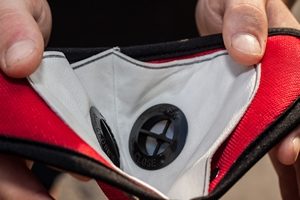
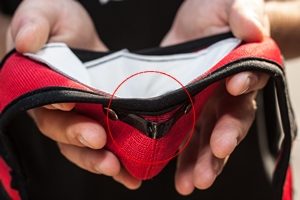

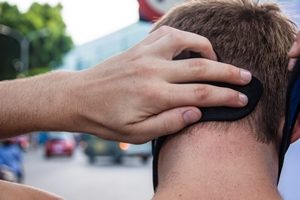
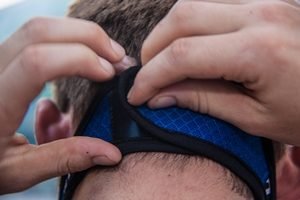
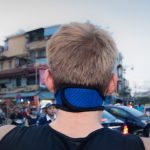
All of our masks are fitted with nose pieces which are attached to form a seal around the bone of your nose.
First of all it is important to make sure the nose piece is located at the top of your nose on the bone. This will prevent the nose piece from clamping your nose shut.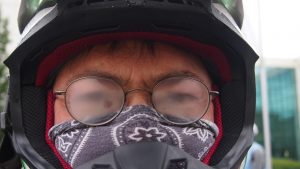
If you’re wearing glasses and you see them fogging up, this means you don’t have a full seal around your nose.
To make sure you have a full seal you have to make sure that the nose piece is pinched tightly.
You can also pinch your nose piece quite tight before putting your mask on. When you have it on, slowly pull the mask apart on your cheek bones while you close your mouth and breathe through your nose until you can fully breathe through your nose.
Then test to see if your glasses are still fogging up.
That depends. Usually, we first confirm the color and size that you ordered and to do that we would need your contact details and delivery address. If possible, we try to offer a Cash On Delivery option for our customers. The best way to save on shipping is ask your friends or family if they’d want to try the mask as well and split the shipping. Shipments go out the next day on 6 days a week. You can decide to order more filters on your first shipment to save shipping costs for your new filters. We have a secure online shop that accepts bank transfers or PayPal. Once payment is received, the chosen products are packaged, picked up by the shipping agency, and sent to you. A tracking number will be provided to you as soon as the package has been shipped. For more information on shipping rates, please see our shipping classes World Wide here.
The nose piece differs on different kind of masks. Some masks are fitted with the ultra-bendable, auto fitting nose piece. It is made out of metal and bent to form around your nose. If this metal piece is flattened and straightened too many times, it can snap. You can bend it as far as you like otherwise.
Replace the filter after 2 to 6 weeks, or 14 to 96 hours of use.
Depending on how much pollution is in the air when you use the filter, expect to use it for for:
- 1 month if you drive 1 to 2 hours a day,
- 2 months if you drive 1 hour a day,
- 3 months if you drive less than 1 hour a day.
The active carbon and micro-pore material in the filter collects pollutants, blocking the airways after it collects enough pollutants. You will notice that it is harder to breath through and the filter will turn grey on the inside and outside.
It is also good to know that runners use their filters 7 times faster than motorbike riders. Cyclists take in up to as much as 4 times more air than an idle rider.

Yes, unfortunately, having thick facial hair can stop a mask from sealing. We do however have many customers with facial hair who use our products. If the edges of the filter are lifted off the skin slightly, polluted air can leak in. Customers with facial hair should understand that they are not sealing out all of the polluted air unless they strap their masks very tight. They still report a large difference in clear airways compared to not wearing a mask. They say that their air consumption quality drastically improves while wearing their masks in traffic. Beards on the jawline or goatees on the chin are located right at the edge of the filter and may hamper a seal, whereas a mustache will not affect the edges of the filter.
No, most countries do not charge Customs or VAT on pollution masks. However, you should expect a small Customs charge if your host country taxes the import of health or medical items. Usually the taxes that Customs in the average country charge are up to a maximum of 20%. Please select your country on your order form to see more details about shipping and custom taxes. If your country is not available for selection, please request the shipping costs in our contact form or get on touch via email or Facebook.
PM2.5 particles are particles that are less than 2.5 micrometers in diameter. A human hair is 40 micrometers in diameter, so they’re 40 times as small as the diameter of a hair, and they lodge deep in the cavities of our lungs unlike larger PM10 sized particulates which get caught before entering the lungs.
PM2.5 particles come in all shapes and sizes within dust, particulate matter, inhalable particles, respirable particles, smoke, and mist. The largest contributing factor is the burning of fuels. When energy consumption increases, so does the amount of emissions polluted.
These small particles can cause long term health problems. Lungs are forced to work harder to provide oxygen. Driving in traffic where cars, motorbikes, trucks, and construction are present can increase the chance of increased fatigue, wheezing, chest pain, headache’s, and aggravated respiratory disease such as emphysema, bronchitis and asthma.
PM2.5 particles are fine particles that are 2.5 micrometers in diameter or smaller. They come from all types of combustion. Motor vehicles, power plants, residential wood burning, forest fires, agricultural burning, and some industrial processes all produce these fine particles.
2.5 micrometers in diameter or smaller. They come from all types of combustion. Motor vehicles, power plants, residential wood burning, forest fires, agricultural burning, and some industrial processes all produce these fine particles.
PM10 particles are combustion particles, organic compounds and other particles 2.5 to 10 micrometers in diameter. They come from crushing and grinding operations and dust stirred up by vehicles on roads.
Health Effects
People with heart or lung diseases, older adults and children are most likely to be affected by particle pollution exposure. However, even if you are healthy, you may feel temporary symptoms if you are exposed to high levels of particle pollution. Numerous scientific studies connect particle pollution exposure to a variety of health issues, including:
- irritation of the eyes, nose and throat
- coughing, chest tightness and shortness of breath
- reduced lung function
- irregular heartbeat
- asthma attacks
- heart attacks
- premature death in people with heart or lung disease
At any age, starting to prevent the number of small particles entering into your lungs is never too late. The environment we live in can harm our bodies depending on our actions. By protecting yourself against the polluted air you breathe, you limit the potential causes of asthma and other diseases.
Recently we have been working with non-profit organizations that are trying their best to improve the knowledge of people and the state of the environment. Working with local and international organizations has allowed us to meet similar minded people who want to improve everybody’s lives. We make sure that we recycle as much as we possibly can. Our packaging is mostly made from biodegradable materials unless we need to keep our filters fresh. We make donations to help our environment. We are also trying our best to research, put together, and distribute information to those who need basic educations about being good to our environment. To learn more about our initiatives, please check out our social media channels and website.
Organic Chemical Filtration Guide
KEY TO FILTRATION PROPERTIES
E = EXCELLENT
G = GOOD
M = MODERATE
P = POOR
ALIPHATIC HYDROCARBONS
* Acetylene -G
* Butane (Iso-Butane) -E
* Butylene -E
* Butadiene -G
* Cyclohexane -E
* Decane -M
* Ethane -G
* Ethylene -M
* Heptane -E
* Heptylene -G
* Hexane -E
* Hexylene -G
* Methane -M
* Nonane -G
* Octane -G
* Octylene -E
* Pentane -G
* Propane -M
* Propylene -G
AROMATIC HYDROCARBONS
* Benzene -E
* Napthalene -E
* Styrene Monomer -E
* Toluene -E
* Toluidine -E
ESTERS
* Butyl Acetate -E
* Cellosolve Acetate -E
* Ethyl Acrylate -E
* Ethyl Formate -G
* Isopropyl Acetate -E
* Methyl Acetate -G
* Methyl Acrylate -E
* Methyl Formate -G
* Propyl Acetate -E
ALDEHYDES & KETONES
* Acetone -G
* Acetaldehyde -G
* Acrolein -G
* Acrylaldehyde -G
* Benzaldehyde -E
* Crontonaldehyde
* Cyclohexanone -E
* Diethyl Ketone -E
* Dipropyl Ketone -E
* Formaldehyde -M
* Methyl Butylketone -E
* Methyl Ethylketone -G
* Valeric Aldehyde -E
ACIDS
* Acetic -G
* Acetic Anhydride -E
* Acrylic -E
* Butyric -E
* Carbolic -E
* Formic -G
* Lactic -E
* Palmitic -E
* Phenol -E
* Propionic -E
ALCOHOLS
* Ethyl -G
* Anyl -E
* Butyl -E
* Cyclohexanol -E
* Isopropyl -E
* Methanol (Methyl) -M
* Propyl -E
SULPHUR COMPOUNDS
* Carbon disulphide -G
* Dimethyl Sulphate -G
* Ethyl mercaptan -E
* Hydrogen sulphide -M
* Methyl mercaptan -E
* Propyl mercaptan -E
* Sulphur Dioxide -E
* Sulphur trioxide -M
* Sulphuric Acid -M
NITROGEN COMPOUNDS
* Ammonia -M
* Aniline -E
* Diethyl Amine -G
* Diethyl Aniline -G
* Dimethyl Amine -E
* Ethyl Amine -G
* Nicotine -E
* Nitric acid -G
* Nitrobenzene -E
* Nitroethane -E
* Nitrogen Dioxide -E
* Nitroglycerine -E
* Nitromethane -G
* Nitropropane -E
* Nitrotoluene -E
* Urea -E
* Uric Acid -E
ETHERS
* Amyl -E
* Butyl -E
* Cellosolve -E
* Dioxan -E
* Ethyl -G
* Ethylene Oxide -M
* Isopropyl -E
* Methyl Cellosolve -E
* Methyl -G
* Propyl -E
HALOGENATED HYDROCARBONS
* Butyl Chloride -E
* Carbon Tetrachloride -G
* Chlorine -M
* Chlorobenzene -E
* Chlorobutadiene -E
* Chloroform -E
* Chloro nitropropane -E
* Chloropicrin -E
* Dibromoethane -E
* Dichlorobenzene -E
* Bromine -G
* Dichlorodifluoro Methane -M
* Dichlorodifluoro Ethane -G
* Dichlorethane -E
* Dichloroethylene -E
* Dichloroethyl ether -E
* Dichloromethane -M
* Dichloromonofluoro Methane -M
* Dichloropropane -G
* Dichlorotetrafluoro ethane -M
* Ethyl bromide -G
* Ethyl Chloride -G
* Ethylene chlorohydrin -G
* Ethylene dichloride -G
* Fluorotrichloromethane -M
* Freon -M
* Hydrogen bromide -M
* Hydrogen chloride -M
* Hydrogen Cyanide -M
* Hydroxen Fluoride -M
* Hydrogen iodide -M
* Iodine -E
* Methyl bromide -E
* Methyl chloride -E
* Methyl chloroform -E
* Methylene chloride -E
* Monochlorobenzene -E
* Paradichlorobenzene -E
* Perchloroethylene -G
HALOGENATED HYDROCARBONS
* Propyl chloride -G
* Tetrachloro ethane -G
* Tetrachloro ethylene -G
* Trichloro ethylene -G
* Vinyl chloride -G
People use different AryMask products to make sure they are filtering the air they breathe. The absorbing active carbon microfiber filter allows people to commute comfortably in heavy traffic. The small PM2.5 particles found in the air around us can therefore be prevented from entering deep into our lungs. Here are a few examples of what when people use their masks. Check out some of our reviews on Facebook here.
Activated Carbon Filter’s remove air born pollution. Specifically sub-micron particles as small as 0.1 micrometers and larger than 2.5 micrometers are removed by the filter.
Breathing in particle pollution can be harmful to your health. Coarse (bigger) particles, called PM10, can irritate your eyes, nose, and throat. Dust from roads, farms, dry riverbeds, construction sites, and mines are types of PM10.
Fine (smaller) particles, called PM2.5, are more dangerous because they can get into the deep parts of your lungs — or even into your blood.
Particle pollution — also called particulate matter (PM) — is made up of particles (tiny pieces) of solids or liquids that are in the air. These particles may include:
- Dust
- Dirt
- Soot
- Smoke
- Drops of liquid
Vapors from exhaust emissions are also dangerous to inhale on a daily basis:
- Nitrogen Oxide (NOx),
- Volatile Organic Compounds (VOC’s),
- Sulphur Dioxide (SO2),
- and Low Level Ozone (LLO).
Activated carbon adsorbs harmful gases across a large surface area. It is combined with an anti-formaldehyde formula that effectively adsorbs harmful chemicals such as formaldehyde, benzene and ammonia, as well as odors and smoke.
Contaminants come in different forms – generally: aerosols (solids/particles) and gases (gases, vapors).
Solids / particles: Dusts, fibers, fumes, microorganisms (e.g. viruses,
bacteria, fungi, spores) and mists
Gaseous substances: Gases and vapors
While our active carbon filters remove more than 95% of PM2.5 particles, we can also provide you with gas masks that filter out 99.98% of gases and small particle emissions.
See more here
A sports masks is strapped around the back of your head and is used by those who need the best protection for their active lifestyles, while keeping airflow and comfortability in mind. The extra-long Velcro can fit tightly around your head whether you’re making small or large adjustments. The filters include five layers of microfiber and active carbon and the outer layer is made to last up to two years, and two large exhalation valves are included for those with higher breathing rates. Sports masks come in different custom designs as well. Sports masks are far more ecofriendly than disposable masks. You can replace the filter, while keeping the outer layer of the mask for longer than a year. That means you’re recycling!
A disposable mask is strapped around your ears, and performs similarly to a sports mask, although with most masks you have no ability to tighten or loosen the mask. These masks have thin ear straps and one or two small valves. The filter efficiency rates differ largely between the different brands and specifications of different disposable masks. To find out more about the disposable option, click here.
Nitrogen oxides are gases that contribute to smog and also produce acid rain and its associated effects. This pollutant is produced from “combustion processes” in land vehicles and ships related to power, heat, and running engines.
Carbon Monoxide is produced by the incomplete burning of fossil fuels in vehicles, home heating equipment, and industrial plants, among many other sources, and is a colorless and odorless gas, poisonous to humans and animals when inhaled.
Sulfur dioxide is produced by the burning of sulfur containing fuels like oil and coal, and can cause health issues, especially in those with existing heart or lung conditions.
Lead is emitted into the air by vehicles and industrial sites and by waste burning facilities. Manufacture and recycling of lead-acid batteries, processing of metals, iron and steel, copper, glass, cement, and industrial and institutional boilers are other sources of lead.
Dioxin is present in plastics, and is released during its manufacture and if plastic waste is incinerated
Benzene pollution occurs during some industrial processes and use of products containing petroleum, like plastics. Tobacco smoke exposure is another source.
Some biological pollutants include pollen and mold.
Pollen from trees, weeds and grass can cause allergies and hay fever, and is a health problem even if it is not lethal.
Mold is a problem affecting indoor air quality. Some molds produce toxins that bring on allergies and asthma.
You can check out our customer reviews or leave a review here.
We currently have a few distributors who are happily carrying our masks and filters. For a list of all distributors, please send us a message or to get a quick response on our Facebook page click here to find out what location is closest to you.
People who are most likely to experience the harmful effects from pollution are: older ages, younger ages, babies, or those with or in premonition of lung diseases.
Those who have or have onset of lung diseases should always check the pollution levels outside and use tools to minimize the risk of congestion and air restriction.
Particle pollution has been linked to:
- Eye irritation
- Lung and throat irritation
- Trouble breathing
- Lung cancer
- Problems with babies at birth (for example, low birth weight)
People concerned with the air they are breathing use AryMask. People of all ages who find it difficult to enjoy their commute, exercise regularly outside, are asthmatic, work on construction sites, or simply commuters. People all over the world use our masks to reduce the amount of particles and gasses they breathe.
People who are most likely to experience the harmful effects from pollution are: older ages, younger ages, and babies. We would suggest everybody who spends time outdoor in polluted areas to wear a pollution mask as often as they can.
Those who have or have onset of lung diseases should always check the pollution levels outside and use tools to minimize the risk of congestion and air restriction.
The Spacer mask is tailor made from the most breathable fabric we could find in the fabric districts in NYC. The fabric is the major reason the price is higher, but also because it’s quality of the work is higher. Read all about the Spacer mask here.
You should use a pollution mask if you drive in and around polluted areas, and would like your lungs to work at full capacity. An active carbon pollution mask will prevent coughing, improve your breathing, and enhance your health.
The most polluted times are during morning and evening rush hour. You should use a pollution mask to feel more comfortable while driving behind buses, cars and motorcycles which emit black smoke. More concentrated pollution is found in this CO2.
Dust is a major issue in an around polluted areas, and PM2.5 dust particles will cause chest pain and less lung capacity in the long term.
Choosing to protect your lungs is a very wise choice.
Yes, our masks block very small particles and thus also block viruses like COVID. Our filters are made from 5 different microfiber layers that can remove small particles down to 0.3 microns of even smaller than PM2.5 particles. There is also a carbon fiber layer that removes gasses. Valves on a mask do not fully secure a virus from leaving a mask, so if you have symptoms of a virus, please make sure to use a mask without any valves. Our masks wil reduce the amount of expiration and air coming out of your mask, and they will redirect your cough or sneeze straight down towards the floor.
